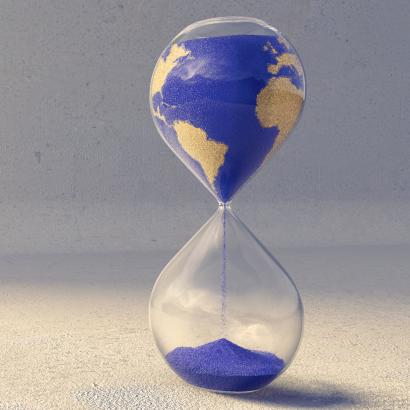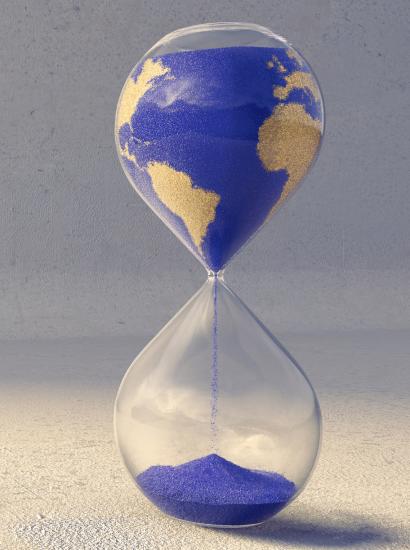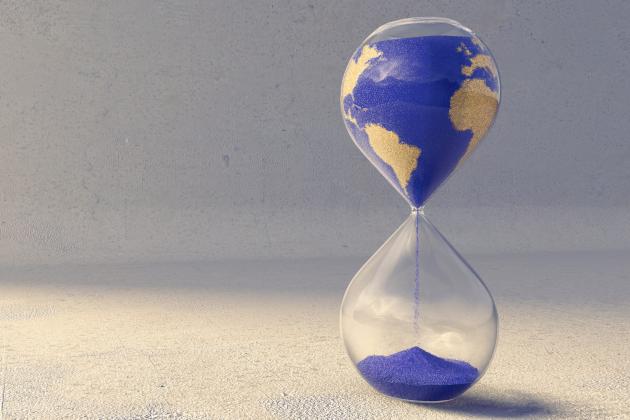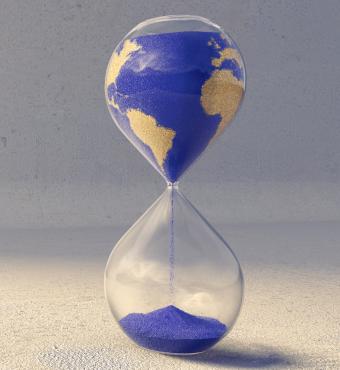High on the agenda of the climate activists who dominated the COP27 summit of two hundred nations at Sharm El-Sheikh, Egypt, was unanimous commitment to set up an extensive financial fund to support poorer nations whose economies have suffered “loss or damage” because of global warming. That money is slated to come from wealthier countries who have now accepted that their “excessive” use of carbon-intensive resources has caused massive economic dislocation in those poorer countries. Thus, the UN statement in part “urges developed country parties to urgently and significantly scale up their provision of climate finance, technology transfer, and capacity-building for adaptation so as to respond to the needs of developing country parties as part of a global effort” to address climate change. The actual amounts owed will have to be determined later.
Years of impassioned pleas for such climate reparations have laid the groundwork for this uniform display of Western remorse. One representative article from Foreign Policy estimated that the world is on track for “as much as a 5°C temperature increase,” a wildly high estimate. The idealized version of the claim runs as follows: “The world’s poorest will bear the worst consequences of the climate crisis. Redirecting international resources to address entrenched inequalities provides a way out.”
But does it?
Since the matter is couched in terms of reparations, a useful place to start the analysis is with Aristotle’s famous formulation of the problem in the Nicomachean Ethics Bk. V. ¶1132a, which runs:
For it makes no difference whether a good man has defrauded a bad man or a bad man a good one . . . ; the law looks only to the distinctive character of the injury, and treats the parties as equal, if one is in the wrong and the other is being wronged.”
It may seem a bit of a stretch to move from Aristotle’s simple two-party situation to a problem that occupies a worldwide arena. However, Aristotle’s basic worry carries over without a hitch. Legal disputes that seek damages or other relief against another turn on that distinctive personal connection between the parties; in practice, it can be satisfied only by a causal connection of the push-pull variety. Under theories of corrective justice, the good person can be made to pay the bad person for any wrongful act that does damage. Thus, in international affairs the principle of restitution depends not on whether the nation charged is “good” or “bad” but whether, and only to the extent that, it has emitted pollution or suffered pollution from others. In many cases the multiple sources of pollution make it quite possible that many, perhaps all nations, have in part polluted themselves.
It should therefore be perfectly clear that the current call for climate reparations depends less on the Aristotelian account of the sources of harm and more on the notion of the economic ability to pay for harms suffered by others, no matter who caused those harms. Consider the case where northern countries derive benefits from the same temperature increases that cause dislocations in warmer regions of the globe. A recent Stanford study claims that climate change has worsened global economic inequality by producing this chart of net winners and losers in terms of GDP per capita:
5 countries burdened by warming
Sudan (population 41 million): -36%
India (population 1.3 billion): -31%
Nigeria (population 191 million): -29%
Indonesia (population 264 million): -27%
Brazil (population 209 million): -25%
5 countries boosted by warming
Norway (population 5 million): +34%
Canada (population 37 million): +32%
Sweden (population 10 million): +25%
Great Britain (population 66 million): +9.5%
France (population 67 million): +4.8%
World’s 3 largest economies
USA (population 327 million): -0.2%
China (population 1.4 billion): -1.4%
Japan (population 127 million): -1.1%
If the purpose of climate justice is to improve the position of the worse off by charging the winners to support the losers, the program cannot practically work. The preferred class contains only 42 million people with large gains, none of whom are (given their small populations) heavy pollution emitters. The last two on the list (Great Britain and France) have generated paltry gains with their larger populations that together total 133 million people. Yet on the opposite side of the coin are huge populations of net losers (nearly 2 billion people) matched only by the world’s three largest economies (around 1.85 billion), none of which are rated as either big climate winners or losers. There is no way that the few winners in this climate lottery can contribute even a tiny fraction to the welfare of poorer counties. Nor should they be required to fork over for harms which to an overwhelming extent were caused either by other persons or natural events.
The anomalies extend through the two other groups. India is not only a great loser in the climate battle, but is itself a primary cause of the crisis if one looks at the table of leading emitters as of 2019:
- China, with more than 10,065 million tons of CO2 released
- United States, with 5,416 million tons of CO2
- India, with 2,654 million tons of CO2
- Russia, with 1,711 million tons of CO2
- Japan, 1,162 million tons of CO2
- Germany, 759 million tons of CO2
- Iran, 720 million tons of CO2
- South Korea, 659 million tons of CO2
- Saudi Arabia, 621 million tons of CO2
- Indonesia, 615 million tons of CO2
If one is interested in designing a functioning climate-cost redistribution system, the simplest approach to a sound climate policy is to tax these nations in accordance with their emissions, at which point China leads the pack. However, in the peculiar logic of UN politics, China has by brutal fiat turned itself into a privileged nation to whom the principle of reparative justice does not apply, for the second-largest economy in the world has positioned itself as a “developing nation” that should benefit from payments by rich developed nations. So much for Aristotle’s wise warning that it is what you do, not how rich you find yourself, that should determine your contribution to the harms that you have allegedly caused. Consider, also, the position of India, now third in the table. It too should find itself as both a contributor and a recipient, and yet it claims to be only on the receiving side.
The general principles of joint causation by multiple sources, used in pollution cases, follow the standard rule that a party must pay for its proportionate share of losses only when it is possible to identify the relative contributions of other parties. Treating the top ten as the only relevant players, of the just over 24 billion tons emitted, China and India account for more than half, which implies that gross contributions from the remaining eight players should be cut by just over half.
It is of course possible for both China and India to mount effective arguments against forcing them to contribute to this fund. But those arguments work to explain why it is a terrible idea to create the UN’s environmental fund in the first place, given the weaknesses of the supposed arguments for reparative justice. The basic objection is that these carbon dioxide emissions should not be treated as if they are responsible for all the losses and damages that activists claim such emissions have inflicted on poor countries. In such sprawling scenarios, the net has to be cast wide to identify alternative sources of damage. Many of these sources could be local, such as earthquakes, volcanoes, typhoons, and hurricanes, which have little if anything to do with global warming, as becomes evident from the huge year-to-year variations in major claims for damage that cannot be explained by tiny, consistent upward movements in CO2 levels. In addition, solar movements or variations in planetary orbits can drive changes in world weather patterns. There were major natural disasters before the level of carbon dioxide crossed the magical 350 ppm line around 1986, which makes it hard to identify the increment of harm caused by these events. Then again, it is also understood that CO2 is a key constituent for photosynthesis, which tends to increase plant growth globally, thus providing key environmental benefits that occur in warm as well as in cooler climates.
Matters only get more out of whack when one looks at the benefit side of the line. It is not the case that the only ones who benefit from the high levels of production, including that of fossil fuels, in wealthy nations are individuals in those nations. The technologies and products that are developed in these countries are through trade and aid shared with the less-fortunate countries of the world, who thus benefit from the carbon dioxide emissions that they rue. Such less-fortunate countries could profit from a more intensive use of fossil fuels in their struggling economies. In addition, these poorer nations are often poor because of the inability to develop a sound set of political institutions that marry some form of limited government to some strong institutions of private property, without which they have no hope of sustained development even if increases in CO2 emissions were cut to zero.
It is sad therefore that the Biden administration has fallen on its own sword by going “all in” on climate reparations. The blood the administration spills will fall on everyone else if the United Nations’ wobbly tax-and-transfer program is ever put into place.

















